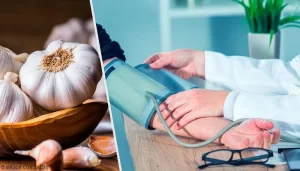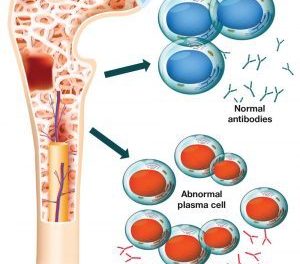A pumpkin is a cultivar of winter squash that is round with smooth, slightly ribbed skin, and is most often deep yellow to orange in coloration. The thick shell contains the seeds and pulp. The name is most commonly used for cultivars of Cucurbita pepo, but some cultivars of Cucurbita maxima, C. angiosperm, and C. moschata with similar appearance are also sometimes called “pumpkins”. For more information about the Pumpkin, read the full article with Pritish Kumar Halder.

Native to North America (northeastern Mexico and the southern United States). Pumpkins are one of the oldest domesticated plants, having been used as early as 7,000 to 5,500 BC. Pumpkins are widely grown for food, as well as for aesthetic and recreational purposes. Pumpkin pie, for instance, is a traditional part of Thanksgiving meals in Canada and the United States, and pumpkins are frequently carved as jack-o’-lanterns for decoration around Halloween, lthough commercially canned pumpkin purée and pumpkin pie fillings are usually made from varieties of winter squash different from the ones used for jack-o’-lanterns.
Description
Pumpkins, like other squash, originated in northeastern Mexico and southern United States. The oldest evidence is pumpkin fragments found in Mexico. That are dated between 7,000 and 5,500 BC. Pumpkin fruits are a type of botanical berry known as a pepo.

pumpkin plant
Traditional C. pepo pumpkins generally weigh between 3 and 8 kilograms (6 and 18 lb), though the largest cultivars (of the species C. maxima) regularly reach weights of over 34 kg (75 lb).
The color of pumpkins derives from orange carotenoid pigments, including beta-cryptoxanthin, alpha and beta carotene, all of which are provitamin A compounds converted to vitamin A in the body.
Production
In 2020, world production of pumpkins (including squash and gourds) was 28 million tonnes. With China accounting for 27% of the total. Ukraine and Russia each produced about one million tonnes.
In the United States
As one of the most popular crops in the United States, in 2017 over 680 million kilograms (1.5 billion pounds) of pumpkins were produced. The top pumpkin-producing states include Illinois, Indiana, Ohio, Pennsylvania, and California.
According to the Illinois Department of Agriculture, 95% of the U.S. crop intended for processing is grown in Illinois. And 41% of the overall pumpkin crop for all uses originates in the state, more than five times the nearest competitor . And the majority of that comes from five counties in the central part of the state. Nestlé, operating under the brand name Libby’s, produces 85% of the processed pumpkin in the United States, at their plant in Morton, Illinois.
In the fall of 2009, rain in Illinois devastated the Nestlé crop, which combined with a relatively weak 2008 crop depleting that year’s reserves resulted in a shortage affecting the entire country during the Thanksgiving holiday season. Another shortage, somewhat less severe, affected the 2015 crop. The pumpkin crop grown in the western United States, which constitutes approximately 3-4% of the national crop, is primarily for the organic market. Terry County, Texas, has a substantial pumpkin industry, centered largely on miniature pumpkins.

pumpkin nutritional value
Nutrition
In a 100-gram (3.5 oz) amount, raw pumpkin provides 110 kilojoules (26 kilocalories) of food energy and is an excellent source (20% or more the Daily Value, DV) of provitamin A beta-carotene and vitamin A (53% DV) (table). Vitamin C is present in moderate content (11% DV), but no other nutrients are in significant amounts (less than 10% DV, table). Pumpkin is 92% water, 6.5% carbohydrate, 0.1% fat and 1% protein
Uses
Cooking

pumpkin in cooking
Pumpkins have several culinary uses. Most parts of the pumpkin are edible, including the fleshy shell, the seeds, the leaves, and the flowers. In the United States and Canada, pumpkin is a popular Halloween and Thanksgiving staple. Pumpkin purée is sometimes prepared and frozen for later use
Leaves
Pumpkin leaf kimchi
Pumpkin leaves, usually of C. moschata varieties, are eaten as a vegetable in Korean cuisine.
Seeds
Pumpkin seeds, also known as pepitas, are edible and nutrient-rich. They are about 1.5 cm (0.5 in) long,

use of pumpkin seeds
flat, asymmetrically oval, light green in color and usually covered by a white husk. Although some pumpkin varieties produce seeds without them. Pumpkin seeds are a popular snack that can be found hulled or semi-hulled at many grocery stores. Per ounce serving, pumpkin seeds are a good source of protein, magnesium, copper and zinc.
Pumpkin seed oil
Pumpkin seed oil, a thick oil pressed from roasted pumpkin seeds, appears red or green in color depending on the oil layer thickness, container properties, And hue shift of the observer’s vision. When used for cooking or as a salad dressing, pumpkin seed oil is generally mixed with other oils because of its robust flavor. Pumpkin seed oil contains fatty acids, such as oleic acid and alpha-linolenic acid.
Reference
https://en.wikipedia.org/wiki/Pumpkin










